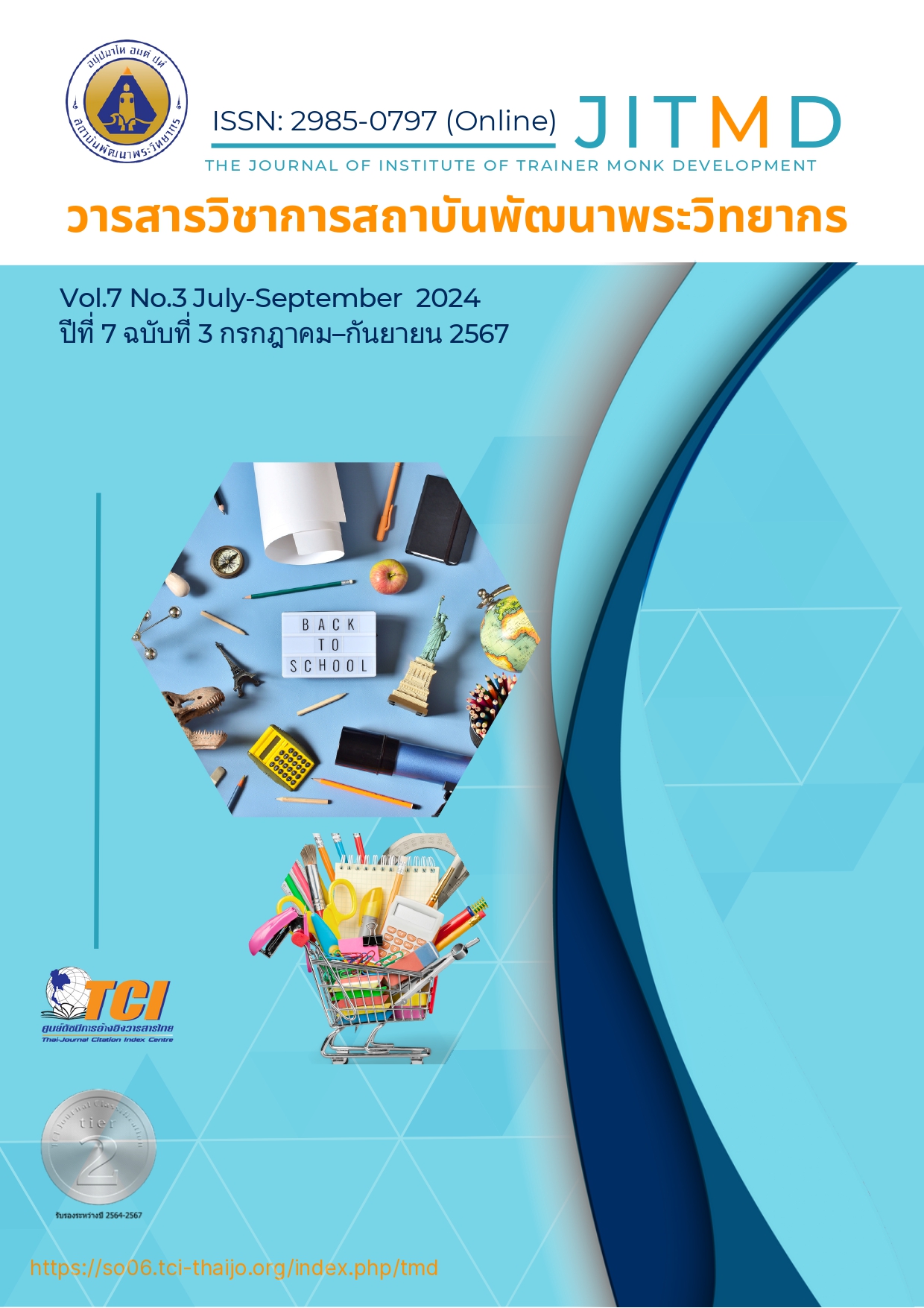Need Analysis for the Development of a Physical Activity Management Model for Undergraduate Mathematics Majors
Main Article Content
Abstract
The objectives of this research were 1) to study students' opinions on the current physical activity management conditions and the expected conditions of students in the mathematics major and 2) to analyze the necessary needs in developing a physical activity management model for mathematics majors. This research is a survey-based study. The target group used in the research were 108 students in the Mathematics Department, Faculty of Education, Phranakhon Si Ayutthaya Rajabhat University, years 1-4. The research instrument was a questionnaire regarding students' opinions regarding the current and expected conditions of physical activity management. Data were analyzed by finding the mean (), standard deviation (S.D.), and finding the Priority Needs Index (PNI). The research results indicated that 1) students' overall opinions on the current state of physical activity management were at a high level (= 3.78, S.D. = 0.90), with the teacher aspect having the highest mean, followed by exercise style and exercise leadership, respectively. As for the expected condition, students' overall opinions were at the highest level (= 4.29, S.D. = 0.76), with the instructor aspect having the highest average, followed by the exercise format aspect and exercise leadership, respectively, and 2) the need to develop a physical activity model for mathematics students. The exercise leader side (PNIModified = 0.18) had the highest need, followed by the exercise style side (PNIModified = 0.11), and the instructor side (PNIModified = 0.07) had the last need.
Article Details

This work is licensed under a Creative Commons Attribution-NonCommercial-NoDerivatives 4.0 International License.
บทความที่ได้รับการตีพิมพ์เป็นลิขสิทธิ์ของวารสารวิชาการสถาบันพัฒนาพระวิทยากร
ข้อความที่ปรากฎอยู่ในบทความที่ได้รับการตีพิมพ์ในวารสาร ถือเป็นความรับผิดชอบของผู้เขียนบทความ และข้อคิดเห็นนั้นไม่ถือว่าเป็นทัศนะและความรับผิดชอบของกองบรรณาธิการวารสารวิชาการสถาบันพัฒนาพระวิทยากร
References
เขมชุดา ศรีสุวรรณ และสุรัตนา อดิพัฒน์. (2566). การพัฒนาทักษะการพูดภาษาอังกฤษเพื่อการสื่อสารของนักเรียนชั้นประถมศึกษาปีที่ 5 โดยใช้กิจกรรมเป็นฐาน. วารสารวิชาการสถาบันพัฒนาพระวิทยากร, 6(4): 1-10.
ทวีศักดิ์ สว่างเมฆ. (2557). การศึกษาการจัดการกีฬาเพื่อสร้างเสริมสุขภาพของนิสิตนักศึกษาในสถาบันอุดมศึกษา. วารสารศึกษาศาสตร์ มหาวิทยาลัยนเรศวร, 17(3): 89-99.
เทอดทูน ค้าขาย และดุรงค์ฤทธิ์ สุขสมบัติ. (2564). ปัจจัยที่มีผลต่อพฤติกรรมการออกกำลังกายของนักศึกษาระดับปริญญาตรี สถาบันอุดมศึกษาในจังหวัดนครราชสีมา. สิกขาวารสารศึกษาศาสตร์, 8(2): 193-205.
พัชริดา กุลครอง. (2565). กิจกรรมทางกาย ยิ่งทำ ยิ่งได้ (มากกว่าที่เราคิด). สืบค้นข้อมูลเมื่อ 13 สิงหาคม 2566 จาก https://pt.mahidol.ac.th.
พิชัย นิราราช. (2556). การศึกษาสมรรถภาพทางกายเพื่อสุขภาพของนักเรียนชั้นมัธยมศึกษาปีที่ 2 โดยใช้การออกกำลังกายแบบสควอททรัสต์. รายงานการศึกษาอิสระ. มหาวิทยาลัยขอนแก่น.
โพสต์ทูเดย์. (2563). Work from Home ทำคนเนือยนิ่งยิ่งเสี่ยง 5 อาการร้ายทำลายสุขภาพ. สืบค้นข้อมูลเมื่อ 2 กันยายน 2566 จาก https://dmh.go.th.
ภานุพันธ์ ลาภรัตนทอง. (2563). รูปแบบการจัดการกิจกรรมทางกาย สำหรับนักศึกษาในมหาวิทยาลัยเทคโนโลยีราชมงคล. วิทยานิพนธ์ปริญญาดุษฎีบัณฑิต. มหาวิทยาลัยนเรศวร.
วริศ วงศ์พิพิธ และคณะ. (2563). กิจกรรมทางกายและพฤติกรรมเนือยนิ่ง: แนวทางและการประเมิน. วารสารวิทยาศาสตร์การกีฬาและสุขภาพ, 21(1): 1-21.
สุรีย์ฉาย พุดสีเสน. (2563). “กิจกรรมทางกาย (Physical activity) สำคัญไฉน”. สืบค้นข้อมูลเมื่อ 24 ตุลาคม 2566 จาก https://pt.mahidol.ac.th.
สำนักงานกองทุนสนับสนุนการส่งเสริมสุขภาพ. (ม.ป.ป.). โรคภัยของเด็กยุคดิจิทัล Gen Z. กรุงเทพฯ: สำนักงานกองทุนสนับสนุนการส่งเสริมสุขภาพ.
อุดม อัศวุตมางกุร และฐิติกร โตโพธิ์ไทย. (2566). สถานการณ์การมีกิจกรรมทางกายและพฤติกรรมเนือยนิ่งในแต่ละเขตสุขภาพของประเทศไทย. วารสารการส่งเสริมสุขภาพและอนามัยสิ่งแวดล้อม, 46(3): 114-128.


